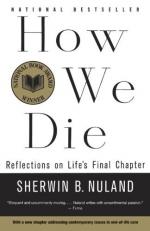
|
| Name: _________________________ | Period: ___________________ |
This test consists of 5 multiple choice questions, 5 short answer questions, and 10 short essay questions.
Multiple Choice Questions
1. The author asserts in the Epilogue, “Between the lines of this book lies an unspoken plea for the resurrection of” what?
(a) “The family doctor.”
(b) “Prayer as medicine.”
(c) “Natural medicine.”
(d) “Healthy living.
2. The author writes in the Epilogue, “A family grasps at a straw that comes in the form of” what?
(a) “A statistic.”
(b) “A newspaper article.”
(c) “A bible verse.”
(d) “An urban legend.”
3. What term from Chapter 7 refers to less than full mental capacity in a medical patient?
(a) Cardiogenic shock.
(b) Exsanguination.
(c) Obtundation.
(d) Dementia.
4. What profession did Robert DeMatteis have?
(a) Doctor.
(b) Computer guru.
(c) Schoolteacher.
(d) Attorney.
5. What is the protagonist’s profession in The Water-Babies, A Fairy Tale for a Land Baby?
(a) Chimney-sweep
(b) Fisherman.
(c) Rancher.
(d) Miner.
Short Answer Questions
1. In what year was Ishmael Garcia diagnosed with HIV?
2. The word “virus” derives from the Latin “virus,” which means what?
3. What important word in the book refers to the feeling that what is wanted can be had or that events will turn out for the best?
4. What is the third of the three main stages of HIV?
5. What was written in Robert DeMatteis’s epitaph, according to the author in Chapter 11?
Short Essay Questions
1. What does the author state regarding dignity in death in the Epilogue?
2. What case study does the author cite in discussing AIDS and HIV in the beginning of Chapter 8?
3. What author does Dr. Nuland cite in Chapter 12? Why?
4. What does the author caution the reader against in Chapter 12? Why?
5. What did Dr. Nuland conclude of his decisions regarding his brother’s care in Chapter 11?
6. How do accidents, suicide, and euthanasia differ from other causes of death, according to the author in Chapter 7?
7. What problems and diseases are associated with those infected with AIDS, according to the author in Chapter 9?
8. What made Robert DeMatteis memorable to Dr. Nuland as a patient?
9. What does the author relate regarding one’s quality of life in the Epilogue?
10. Why does the author use chimney sweeps as an example in Chapter 10?
|
This section contains 866 words (approx. 3 pages at 300 words per page) |

|




